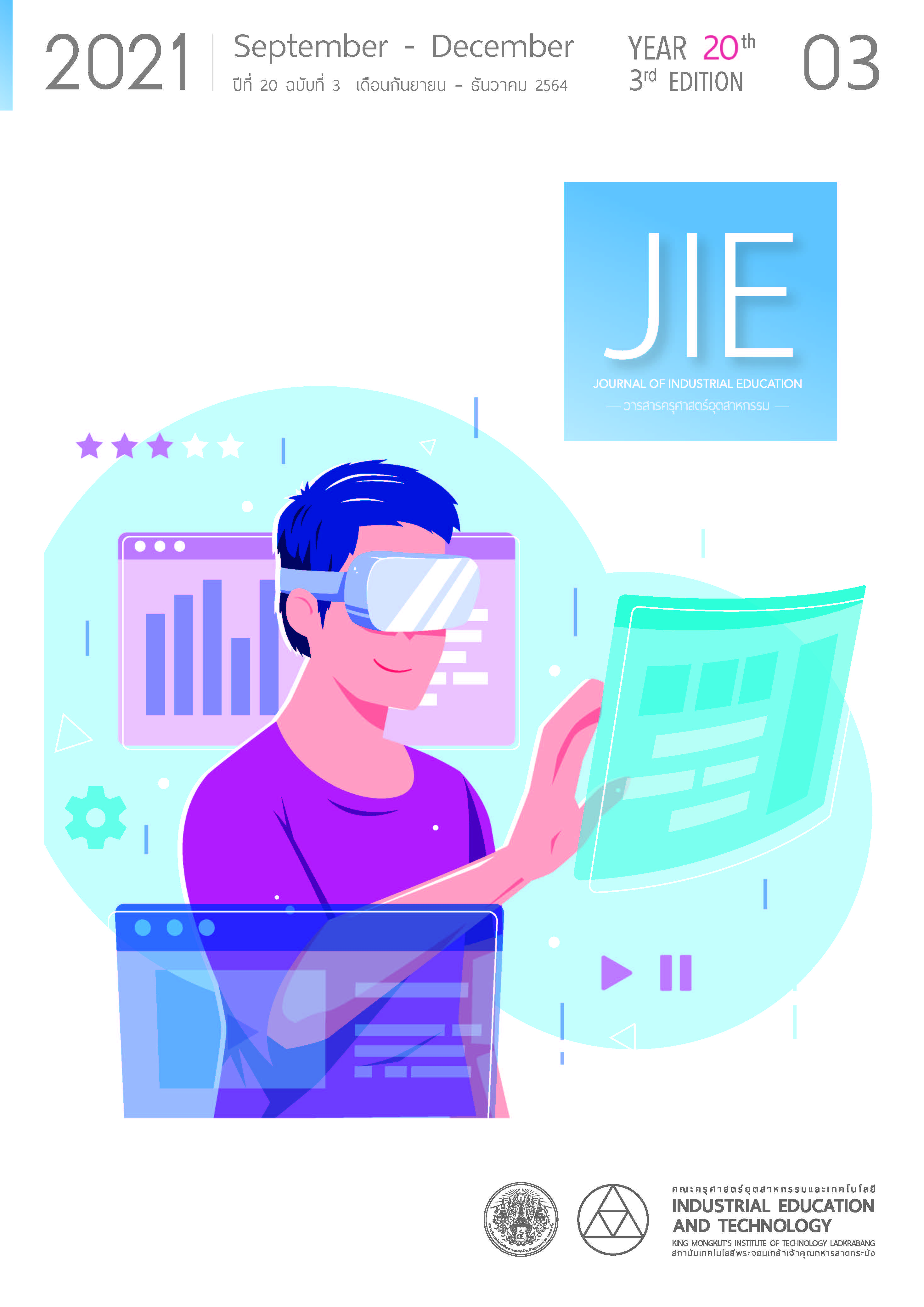MODEL OF ACTIVITIES FOR DIGITAL SCULPTURE CHARACTER CREATION FOR UNDERGRADUATE STUDENT
Keywords:
Activities for Digital Sculpture Character Creation, Digital Sculpture, 3D Computer GraphicAbstract
The purposes of this research were to study the process of Digital Sculpture Character Creation (DSCC) for undergraduate student and proposed model for organizing activities to the DSCC for undergraduate student. The sample used consisted 45 students of two undergraduate courses of 3D computer graphic, seven experts of the DSCC design and creator, seven instructors of the DSCC. The sample used in this research was selected using purposive sampling, under research criteria. The instruments of this study were: 1) teaching observation form for 3D computer graphic course 2) creation process and teaching process of the DSCC questionnaire and (3) structured Interview form. The data were analyzed by mean, standard deviation and percentage. The research results indicated the following: 1)Teaching and learning management for the DSCC was covered seqeutial content, used appropriately instructional media, emphasized on active classroom to affect student creativity and classroom cooperation which were rated excellent. 2) The process of DSCC should emphasized on artistic skill and figure analysis. Also, to create an unique character, student must be accomplished their design concepts in order to develop their final object. These were rated at good level with mean () of 3.74 and standard deviation (S.D.) of 0.75 3) The teaching processes by the instructors were concised of character structural sketching to achieve the correct figure proportion, created object according by self aptitude and emphasized skill on understanding and remembering the command to unlimit students’ imagination and creativity, there were rated at good level with mean (
) of 3.68 and standard deviation (S.D.) of 0.81.
References
Office of the Education Council. (2017). The National Scheme of Education B.E. 2017–2036. [online]. Available: http://www.onec.go.th/index.php/page/view/Outstand/2532 Retrieved July 10, 2021.
Songkram, N. (2013). Creating Innovators : Change learners into innovators. Bangkok: Chulalongkorn University. 24-32. (in Thai)
Wongyai, W. (2011). Development of higher education curriculum. 2nd ed. Bangkok: R&P Print. 39-43. (in Thai)
Suselo, T., Wunscke, B., & Reilly, A. L. (2017). The Journey to improve teaching computer graphic : A systematic review. [online]. Available: https://www.researchgate.net/publication/326147819_The_Journey_to_Improve_Teaching_Computer_Graphics_A_Systematic_Review Retrieved July 10, 2021.
Hattal, B. M., Connell, K. O., & Sokolove, D. (2012). Guidelines for curricula in computer graphics in the visual arts. [online]. Available: https://education.siggraph.org/archive/past-projects/art/guidelines-1990 Retrieved July 14, 2021.
Alley, T. (2014). Computer graghics knowledge base report. [online]. Available: https://education.siggraph.org/resources/knowledge-base/report Retrieved June 10, 2021.
Department of International Trade Promotion, Ministry of Commerce, THAILAND. (2019). Business Character. [e-book]. Available: https://www.ditp.go.th/ditp_web61/article_sub_view.php?filename=contents_attach/211770/211770.pdf&title=211770&cate=1133&d=0 Retrieved July 23, 2021.
Thai animation and computer graphics association. (2020). TACGA news & event. [e-book]. Available: http://www.tacga.or.th/news-events/ Retrieved July 23, 2021.
Crossley, K. (2014). Character Design From The Ground Up. United Kingdom: ILEX. 72-120.
Burdek, B. E. (2015). Design : History, Theory and Practice of Product Design. 2nd ed. Germany: Birkhauser. 108-113.
3dtotalPublishing. (2018). Beginner’s guide to Zbrush. United Kingdom: Gomar Press. 15-182.
Panmanee, A. (2003). Creative psychology of teaching. Bangkok: Y M Creative. 12-79. (in Thai)
Glickman, C. D., Gordon, S. P., & Ross-Gordon, J. M.C. (2010). Super Vision and Instructional Leadership: A Developmental Approach. Boston: Pearson. 108-119.
Norman, D. (1984). Software Engineering for User Interfaces. Carnegie Mellon University: Allen Newell Collection. 59-106.
Rivers, A., Durand, F., & Igarashi, T. (2010). “3D modeling with silhouettes.” ACM Transactions on graphics. 29(4), 109.
Lee, J., Ahn, J., Kim, J., Kho, J. M., & Paik, H. Y. (2018). “Cognitive evaluation for conceptual design: comgnitive role of a 3D sculpture tool in the design thinking process.” Digital Creativity. 29(4), 299-314.
Sloan, R. J.S. (2015). Virtual character design : for games and interactive media. Boca Raton: CRC Press LLC. 4-50.
Kumpai, K., Kusirirat, K., & Wata, A. (2020). “Results of character design activities from playing computer games to enhance 3D character design skills in 3D animation courses.” RMUTSB Acad. Journal (Humanities and social sciences). 5(2), 269-282. (in Thai)
Lopez, C., Pena, J. A., & Miralbes, R. (2019). “3D organic modeling using hybrid techniques with polygons.” In L. Luo, (Eds). Temporal Modelling of Customer Behaviour, Switzerland: Springer International Publishing. 263-271.
Copyright Acts. (1994). Licensing. [e-book]. Available: http://www.fio.co.th/south/law/8/85.pdf Retrieved July 23, 2021.
Boonsinsuk, U. (2019). “Character licensing and the digital path to monetization. Case studies from Thai creators.” Executive Journal. 39(1), 12-23. (in Thai)
Artstation. (2021). Digital Product. [online]. Available: https://www.artstation.com/marketplace/game-dev Retrieved July 25, 2021.
Thairath online. (2021). NFT. [online]. Available: https://www.thairath.co.th/lifestyle/tech/2099661 Retrieved July 26, 2021.
Downloads
Published
How to Cite
Issue
Section
License
Copyright (c) 2021 Journal of Industrial Education

This work is licensed under a Creative Commons Attribution-NonCommercial-NoDerivatives 4.0 International License.
"The opinions and contents including the words in papers are responsibility by the authors."
"ข้อคิดเห็น เนื้อหา รวมทั้งการใช้ภาษาในบทความถือเป็นความรับผิดชอบของผู้เขียน"



